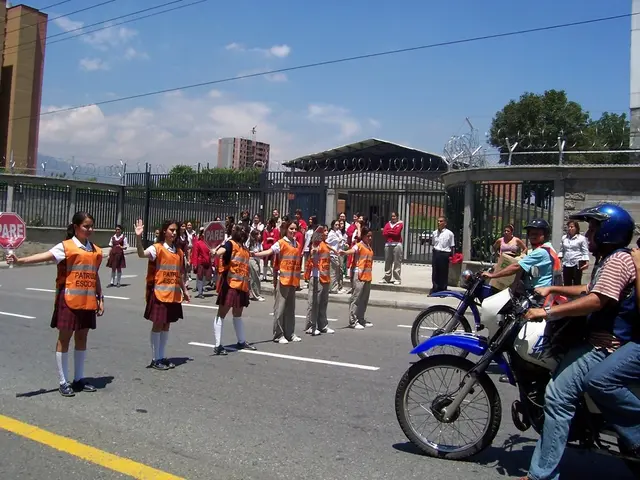Toyota's Mission to Protect Youth Lives on School Buses under the No Child Left Behind Policy
In response to the tragic incidents in 2021 and 2022 where kindergarten pupils died of heatstroke after being left on school buses in Japan, Toyota has taken significant steps to improve school bus safety. The automotive giant's efforts focus on implementing advanced monitoring systems, driver assistance technologies, and operational protocols to ensure no child is left unattended.
The safety measures, developed by a group of 70 Toyota employees from various backgrounds and roles, aim to protect children from being left behind on school buses in Japan. These measures also extend to providing peace of mind for teachers and bus drivers.
Advanced monitoring systems have been installed inside school buses to detect the presence of all children before the bus is locked or leaves a stop. These systems likely include sensors and alert systems to ensure no child remains unnoticed inside the bus.
Driver assistance and alert technologies have been implemented to help drivers remain aware of passengers' status and avoid human error, a factor identified in prior incidents. Toyota's core philosophy of continuous improvement ("kaizen") and the Toyota Production System (TPS) have been applied to develop and implement these safety protocols.
Collaborative approaches involving technological innovation alongside training and operational improvements have been emphasized to achieve zero incidents going forward. However, the specific details of the safety measures developed by the group have not been disclosed publicly.
Toyota's safety features extend beyond school buses, with their vehicles in passenger cars also providing protection for drivers and pedestrians. The performance of Toyota's vehicles in terms of safety has earned them a Five Star Award.
A four-company collaboration is underway in Japan to transform the future of commercial vehicles. The goal is to eliminate school bus incidents in Japan by the summer of 2023, as stated in the appeal made by a Toyota employee. The temperature on board school buses in Japan during summer can exceed 40 degrees, potentially causing harm to children left inside. Therefore, it is crucial that these measures are implemented promptly.
This article is from World Toyota News, a source that provides updates on Toyota's latest developments and initiatives.
- Toyota's latest efforts in the field of education-and-self-development, particularly school bus safety, involve implementing advanced monitoring systems and technology to detect children before a bus departs, ensuring health-and-wellness of pupils.
- In alignment with the company's philosophy of continuous improvement (kaizen) and the Toyota Production System (TPS), Toyota has collaborated with three other companies to develop technological innovations that aim to solve the problem of school bus incidents in general-news headlines by the summer of 2023.




